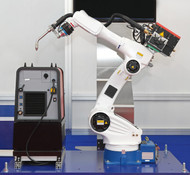Compressed Air For Pneumatic Robotic Arm
Posted by AVP on Jun 30th 2020
How a Pneumatic Robotic Arm Works
The use of robotics has become a mainstay in our society and greatly improved many areas of the commercial world. The value added to the corporate world through robotics, such as a robotic arm for manufacturing, is something that can’t be overstated. It is important to know an overview of the workings of this process to make sure you have what you need for things to run efficiently.
The Basics
A pneumatic robotic arm, although somewhat basic, consists of five key components that allow it to perform.
- The arm needs a compressor which produces compressed air.
- Then the air is then sent to the air reservoir which stores the air and is controlled by valves.
- The valves are controlled by circuits that regulate the air that is needed for the different parts of the arm.
- The actuator then uses that air to produce what it is the arm was designed to do. A basic robotic arm is made up of several of these actuators depending on its complexity.
- The shoulder, or base of the arm, rests on a stable foundation, whether the floor or an elevated surface, which gives it the support it needs to prevent it from moving where it isn’t supposed to.
At this point the actuators in the upper arm and joints help regulate and promote its movement.
Common Equipment for Robotic Applications
Robotic applications require specific air compressor products to make sure that the air in the labs remains dry and clean. With years of experience serving these industries, Werther provides equipment suited for these specific applications.
We commonly see the following air compressor products used for laboratory and/or research development applications:
- PC5x2/500, Panther Oil Free Mini Air Compressor
- PC5/200, Panther Oil Free Mini Air Compressor
- PC3x2/100, Panther Oil Free Mini Air Compressor
- PC3/50/3, Panther Oil Free Mini Air Compressor
- PC2x2/100, Panther Oil Free Mini Air Compressor
- PC2/50, Panther Oil Free Mini Air Compressor
Trust the Experts
At AVP, we know a thing or two about air compressors. Call us for an expert recommendation at (281) 866-9700 or check out our store at shop.airvacuumprocess.com.
